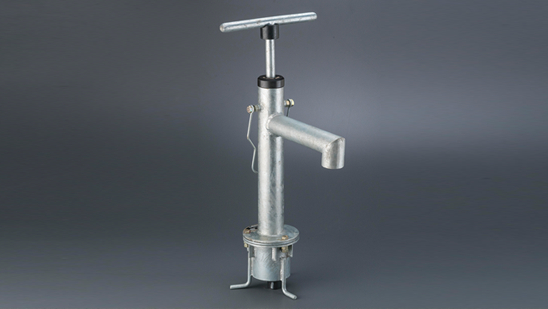Water hand pumps are manually operated pumps; They are used for bringing water from earth underground to earth surface and is used in every country for a variety of industrial, marine, irrigation and household purposes.
Image shown below is the typical design of Hand Pump.

§ Handle
§ Pump rod
§ water outlet
§ Piston
§ Piston valve
§ Foot valve
§ Rising main
§ Suction lift
There are several types of water hand pumps. Most commonly used hand pumps are positive displacement pumps, positive displacement pumps have reciprocating plungers or pistons. In a piston pump, the piston is fitted with the piston valve (non-return valve) and slides vertically up and down within a cylinder which is fitted with a foot valve (non-return valve). Applying the force on handle of the water pump causes vertical movement of pump rods that are connected to the piston.
When the piston of the pump moves upwards, the piston valve closes and a vacuum is created below the piston valve, Piston valve causes water to be drawn into the cylinder through the foot valve, which opens. Simultaneously, water above the piston, held up by the closed piston valve, is displaced upwards. In a suction hand pump water flows outward through the delivery outlet; in a hand pump with a submerged cylinder it is forced up the rising main.
When the piston moves downwards in hand pump, the foot valve closes to prevent back flow of water and the piston valve opens to allowing the piston to move down through the water in the cylinder.


